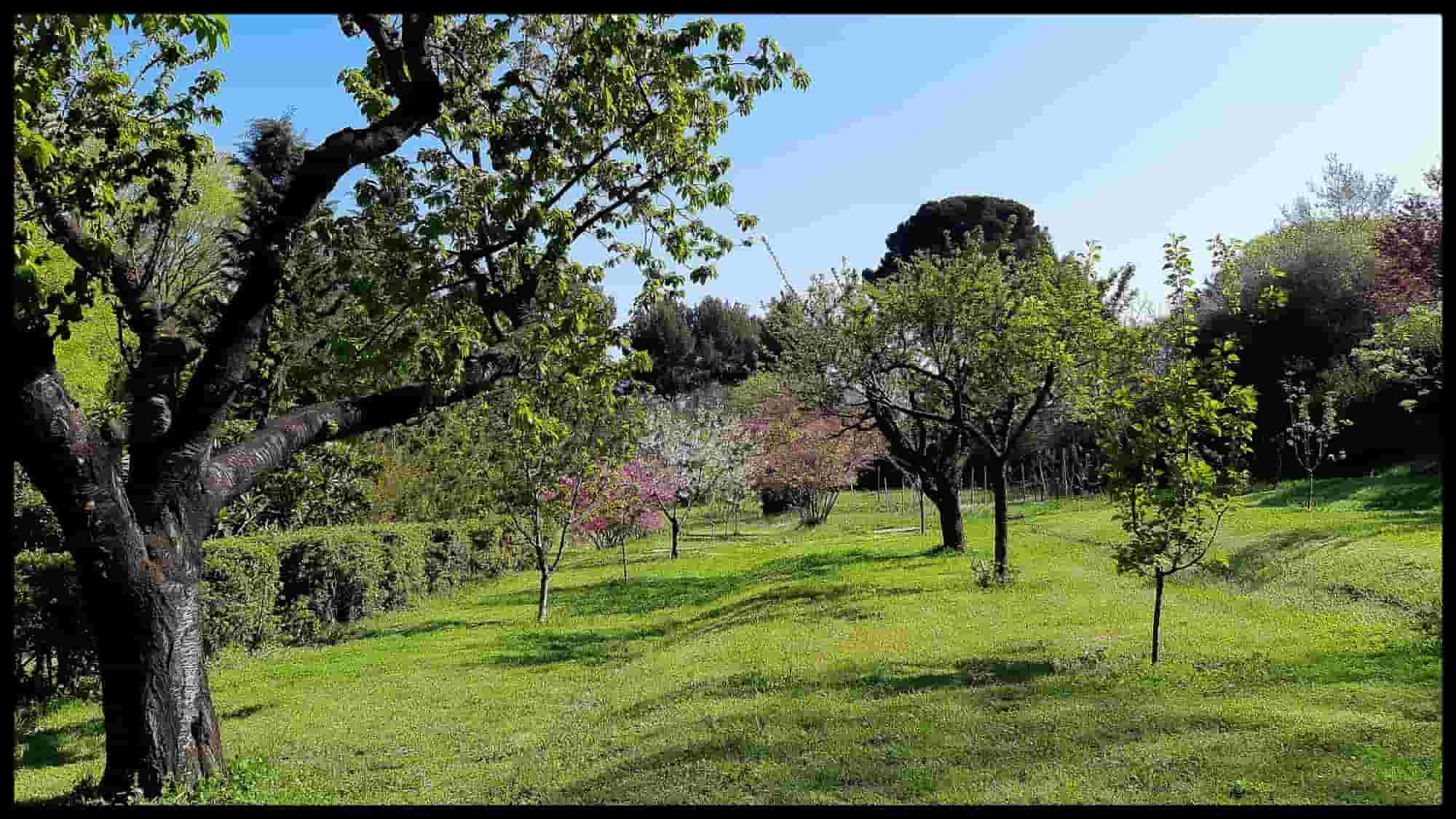
Fruit trees sensitive to frost
Our selection of early flowering fruit trees
Contents
Planting a fruit tree in your garden is a legitimate desire, as enjoying sun-ripened fruits is an incomparable pleasure. While most fruit trees generally have significant cold resistance and can potentially thrive in all climates, not all can be planted everywhere in France. Indeed, some regions, typically located north of the Loire, are prone to late frosts that can occur up until the famous Ice Saints. However, many fruit trees bloom early, such as the almond tree, which can flower as early as February. And even the slightest frost can destroy a hoped-for harvest overnight. Therefore, if you want to plant a fruit tree, it is essential to choose varieties suited to your region’s climate. Discover our selection of six fruit trees sensitive to cold that may suffer from late frost. Thus, they should only be planted in regions where the risk of spring frosts is rare, such as in the south of France.
Why can't some fruit trees be planted everywhere?
At the outset, a clarification is necessary: these few lines may cause you some distress, especially if you are not fortunate enough to live in a region where winters are mild, frosts are almost non-existent, and spring is gentle. In short, if you reside north of the Loire, there is no need to read this article, as it may do you more harm than good. We will discuss fruit trees whose early flowering can suffer from the cold, those that only bear fruit in Mediterranean regions, and possibly in areas with an oceanic climate if they benefit from a sunny and sheltered location from cold winds.
Perhaps it is worth reiterating why, in northern France, it is preferable to plant only trees that are less sensitive to the cold, such as the apple tree, the pear tree, the plum tree, the quince tree, the common medlar (not the Japanese one!), the cherry tree… Simply put, because a single spring night frost can ruin all hopes of a good harvest. Indeed, until mid-May, it is not uncommon to see temperatures drop below 0°C in certain regions with a continental or montane climate. At this time, spring is already well advanced. The trees have emerged from their period of vegetative rest, bud burst and leafing are well underway, as are flowering and sometimes fruit set (the period corresponding to the first stage of fruit development). In short, the sap has risen significantly, the tissues, which are very vulnerable, are highly hydrated, and a late frost would be catastrophic. It would have disastrous consequences for the foliage, buds, but especially for flowering. Indeed, frost destroys the ovary, which effectively erases the fruiting for the year.
Therefore, those living in a continental or montane climate may as well get their tissues ready. There is no point in hoping to eat apricots or peaches straight from the tree, but you can create an orchard of plums and other apple trees; the choice is vast! In the south, you can indulge yourself and plant one or two specimens from our selection.
Before delving into the details, also discover our 13 typically Mediterranean fruit trees that smell of the south.
Read also
Apricot tree: planting, pruning and careThe almond tree, the earliest of all fruit trees
In the south, the almond tree (Prunus dulcis) heralds spring as it is the first tree to bloom. From February, sometimes even late January, the almond tree presents its delicate and light pink-white flowering, fragrant and nectariferous. Pollinating insects are quick to take advantage, visiting the almond trees as they emerge from their winter slumber. They are particularly beneficial as most almond trees are self-sterile, meaning they require the company of other almond trees of different species.
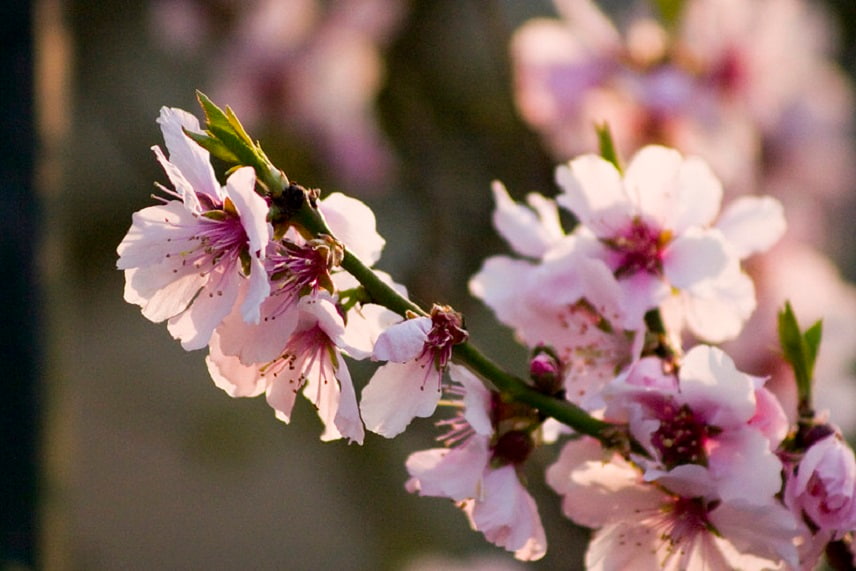
The flowers of the almond tree are very fragile due to their early blooming
A member of the Rosaceae family, the almond tree is native to Asia and was early naturalised in the Mediterranean basin, where it thrives in sunny conditions. Although it is hardy (down to -25 °C), its flowering is susceptible to frost damage due to its early nature. Planting it outside the Mediterranean region is rather uncertain…
Planting should be done in autumn, in ordinary, well-drained, light, and deep soil. As for the location, it should be well-sunny and sheltered from cold winds. By adhering to these conditions, you can expect a good harvest as early as June-July for fresh almonds, and late August to early September for dried almonds.
Discover other Fruit trees
View all →Available in 0 sizes
Available in 1 sizes
Available in 1 sizes
Available in 1 sizes
Available in 1 sizes
Available in 1 sizes
Available in 1 sizes
Available in 1 sizes
Available in 1 sizes
Available in 1 sizes
The apricot tree, a flowering from March
Here is another fruit tree that flowers early in spring. From March, the flowers of the apricot tree (Prunus armeniaca) usually appear before the leaves, or at the same time for some varieties. The small white or pink flowers last for a short time, attracting a host of nectariferous pollinating insects. Generally self-sterile, the apricot tree is self-sufficient but only begins to produce 3 to 4 years after planting, reaching full ripeness at 7 years.
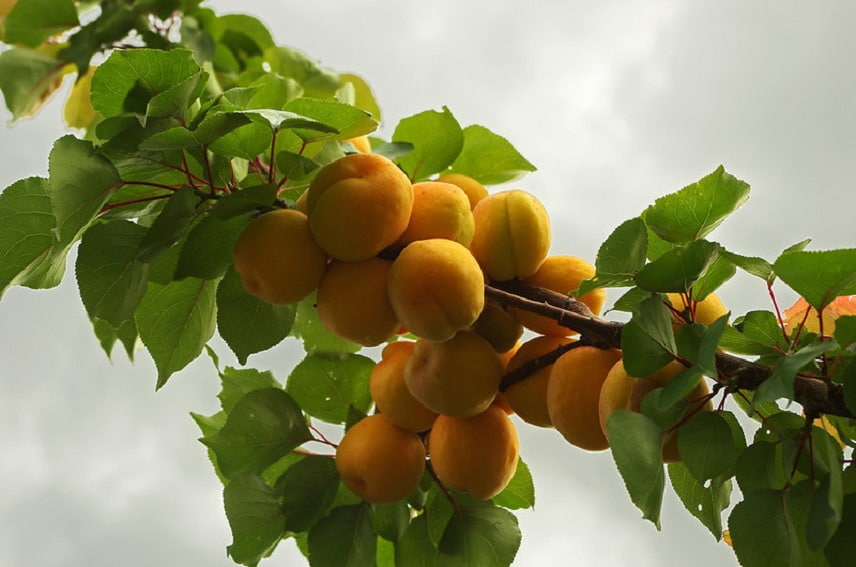
Touching the flowers, frost can compromise the harvest of apricots
Elsewhere than in a southern climate, you can still try to plant an apricot tree, hardy down to -20°C, sheltered by a wall, in a very sunny spot and absolutely protected from cold drafts. Thus, varieties like ‘Tardif de Tain’, ‘Tardif de Bornareil’, ‘Rouge Tardif Delbard‘, ‘Luizet’, and ‘Bergeron’… But beware of late frosts that can destroy the flowers at just -2°C! Unless your orchard benefits from a microclimate, this is therefore excluded. In the South, there is no problem for the apricot tree, which loves light, well-drained soils. It is planted in autumn. Since your climate is mild, favour varieties with earlier flowering such as ‘Canino’, which is very productive, ‘Rouge de Roussillon’, or ‘Muscat de Nancy’.
The harvest of apricots spans from late May to early September, depending on the varieties.
Peach tree, a fruit tree fond of mild weather
The peach tree (Prunus persica), another member of the Rosaceae family, blooms in pink or white between March and April. Therefore, once again, fruiting greatly depends on the temperatures during these two months. In the southern coastal regions of France, frosts are non-existent at this time, except for very rare exceptions. You can vary the varieties by growing peaches or nectarines, which can be early or late, without any difficulty, as peach trees are self-fertile.
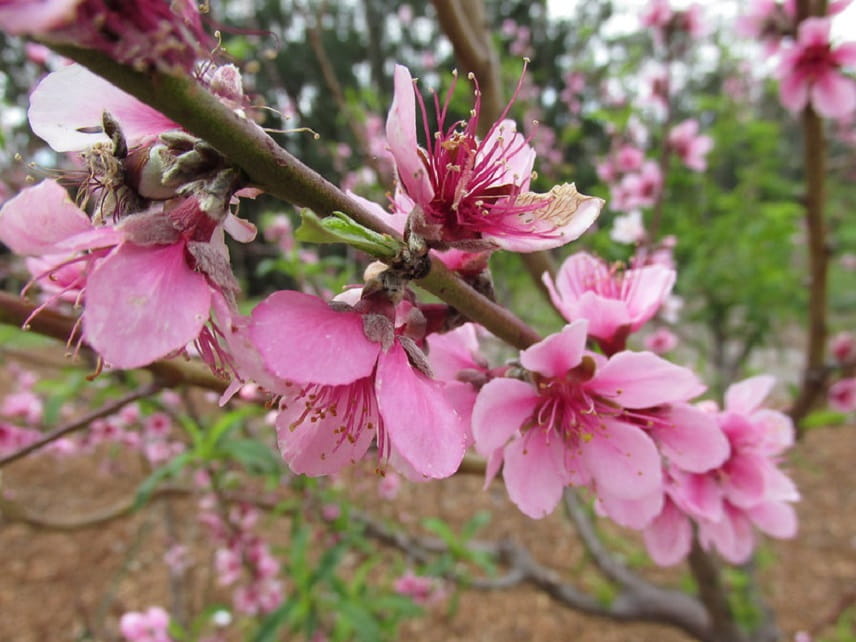 The flowers of the peach tree are very sensitive to severe frosts.
The flowers of the peach tree are very sensitive to severe frosts.
However, outside the south of France, frosts are still a concern at the time of flowering. If you wish to harvest white or yellow peaches, nectarines, or vine peaches, it is obligatory to plant your peach tree in a sunny spot, well sheltered from draughts and cold winds, for example, against a south-facing wall. Among our wide range of peach trees, consider the nectarine ‘Morton’ with its sweet fruits, the peach ‘Amsden’, a very vigorous old variety, or the peach ‘Téton de Venus’, known for its large, pointed, oval fruits.
Choosing later varieties also increases your chances of success. Peach trees that produce vine peaches, such as ‘Sanguine de Savoie’, yellow vine peach, or ‘Sanguine vineuse’, are generally later but remain sensitive to night frosts.
In any case, like most fruit trees, the peach tree prefers light, deep, and well-drained soils. Planting is preferably done in autumn.
Loquat, the medlar fruit tree
The Japanese loquat (Eriobotrya japonica), a fruit tree from the rose family (yet another one!), has nothing to do with the common loquat (Mespilus germanica). The former originates from the warm mountainous regions of China, while the latter comes from Northern Europe. It goes without saying that they do not have the same cold resistance. The Chinese loquat is particularly sensitive to cold. It is indeed a fruit tree whose floral clusters, consisting of clusters, are white to cream in colour and appear in October or November. It is not the spring frosts that are likely to compromise fruiting, but rather the cold and frost, which are already quite present in certain regions. The flowers will not withstand temperatures of -3 to -5°C.
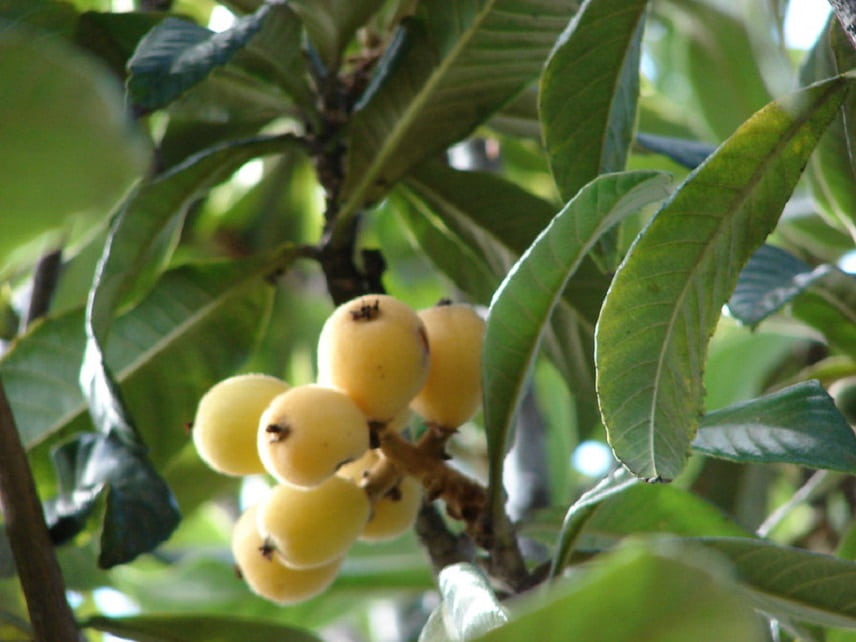
The flowers of the Japanese loquat appear in September or October, making them sensitive to cold.
To achieve a good production of bibasses (or bibaces), the Japanese loquat should be planted in southern or oceanic regions, where winters remain very mild. Fruiting occurs in May-June, sometimes as early as April. It enjoys very good sunlight and a sheltered position from winds. The soil must be well-drained, deep, and loose.
The strawberry tree, the garrigue bush
The strawberry tree (Arbutus) grows naturally in rocky and arid areas, scrub vegetation, or along the sandy edges of Atlantic coastlines. As a Mediterranean tree through and through, the strawberry tree loves warmth and fears severe frosts more than anything else. However, it is hardy down to -15 °C, so it can be planted (almost) anywhere in France.
On the other hand, harvesting strawberries can be much more challenging. Indeed, the strawberry tree has a particularity: its fruits develop very slowly. It takes almost a full year to obtain mature and well-coloured strawberries. The fruits reach ripeness in September-October, at the same time as the new flowers. Consequently, the flowers or fruits can be destroyed in winter if the cold is too intense or the frosts too severe and prolonged.
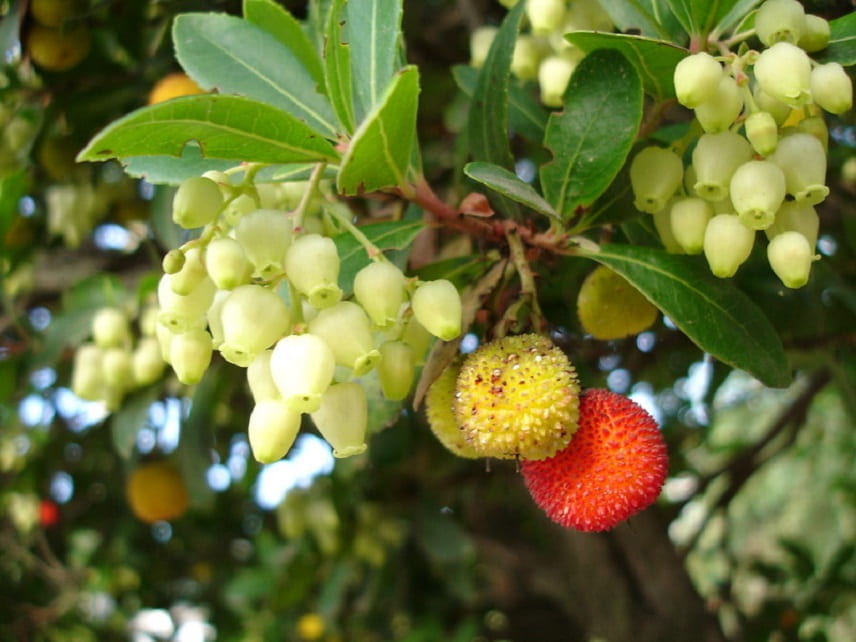
The fruits of the strawberry tree reach ripeness in September-October, at the same time as the new flowers
In a Mediterranean or oceanic climate, one can be sure of having fruits that resemble small strawberries. Moreover, it is an easy bush to grow that thrives in poor, rather acidic, light, and well-drained soils. It is also ideal when planted in a free hedge or against a wall that protects it from the winds. Arbutus unedo is the most common and easiest to cultivate.
The pomegranate tree, the fruit tree with a long lifespan
With the pomegranate tree (Punica granatum), an emblematic tree of Mediterranean civilisations, it is the flowering that stands out. With its bright red or orange blooms, it lasts throughout the summer. Therefore, there is no risk of flower destruction due to frost. As for its fruiting, this occurs from late September to late October. Thus, again, there is little risk of frost. Moreover, the fruiting pomegranate is resistant to temperatures dropping to around -10 °C to -15 °C, depending on the varieties. So, all conditions seem to be met for it to be grown everywhere. However, to bear fruit, the fruiting pomegranate needs long periods of heat, which it will only find along the southern coast of France. Elsewhere, it can develop but will rarely produce pomegranates.
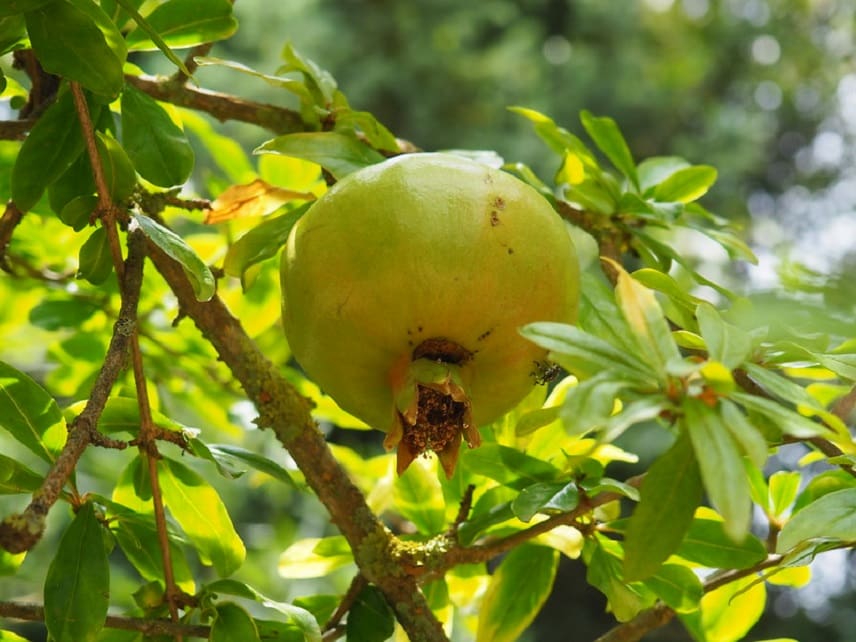
To bear fruit, the fruiting pomegranate needs a long period of heat
- Subscribe!
- Contents
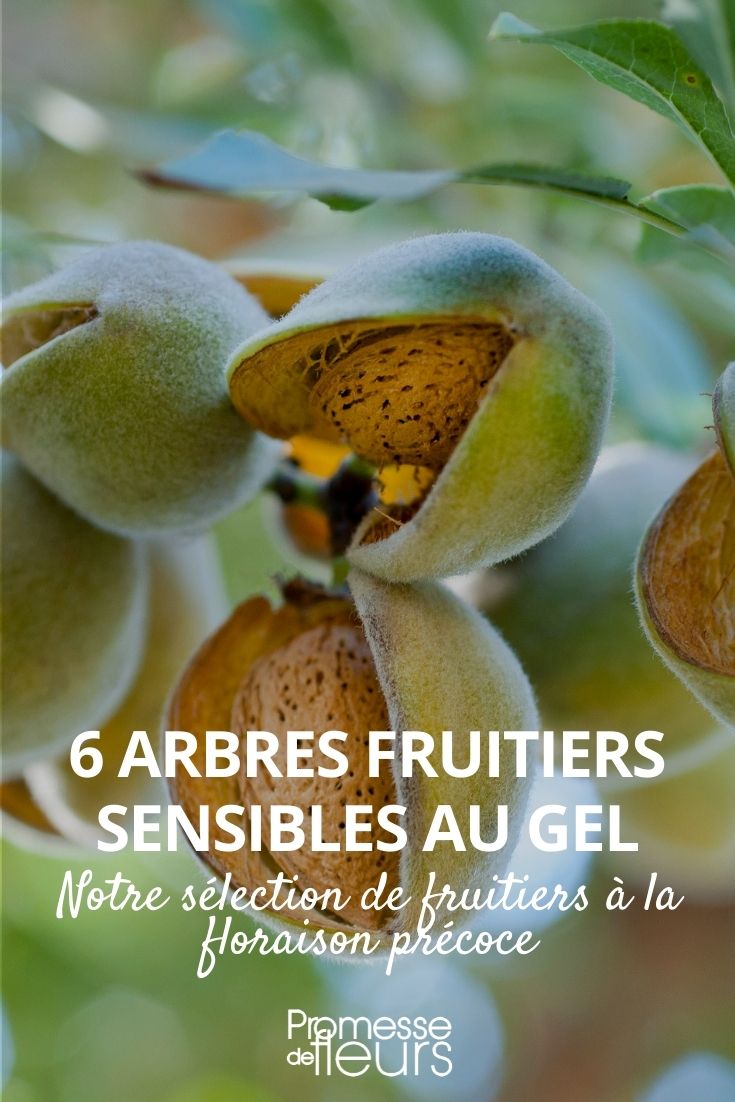






























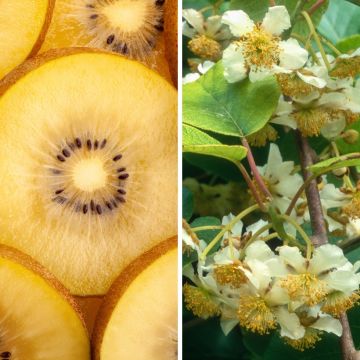
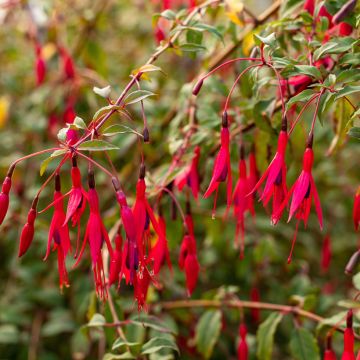
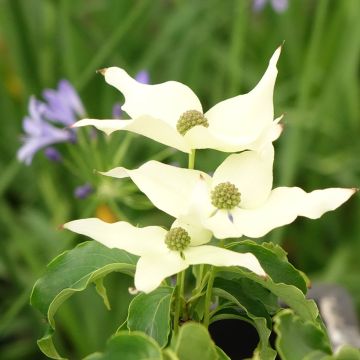
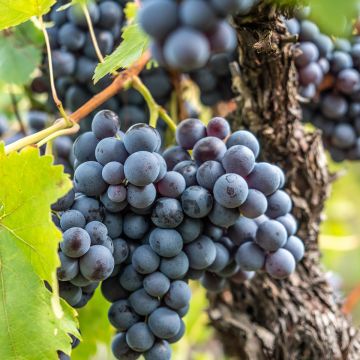
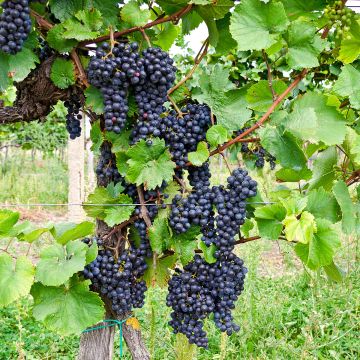
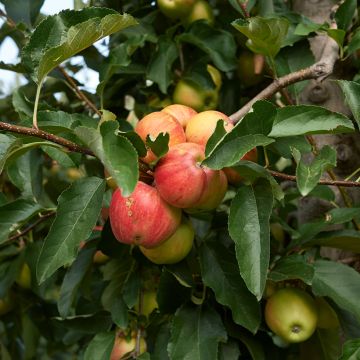
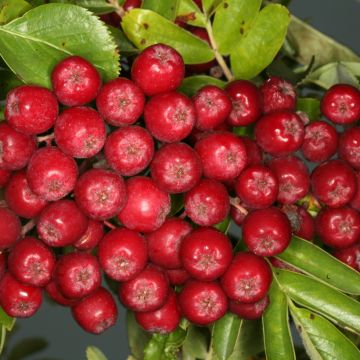
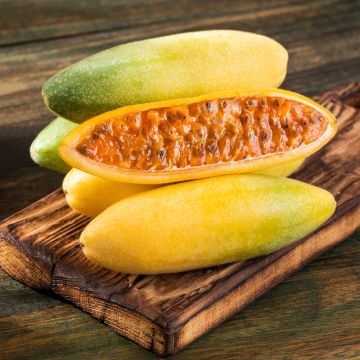
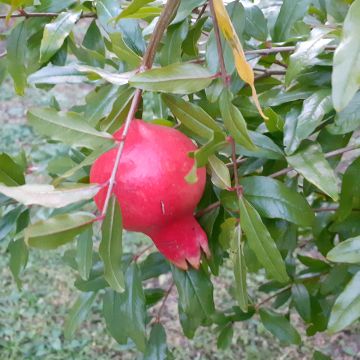
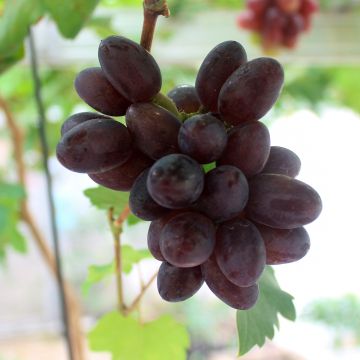
Comments